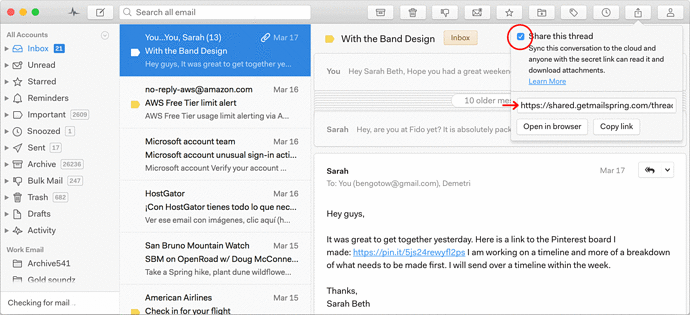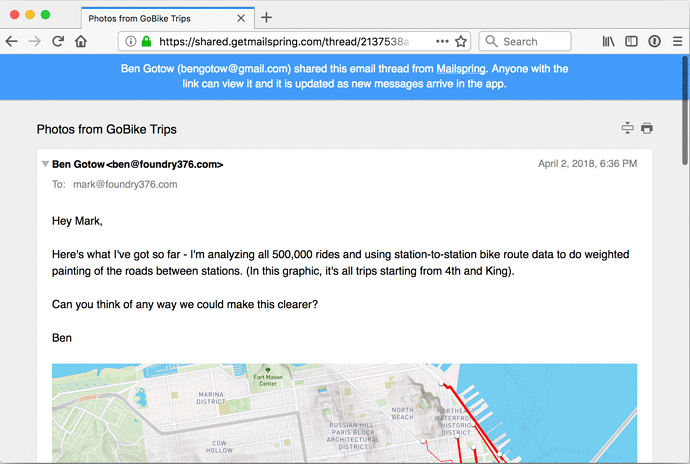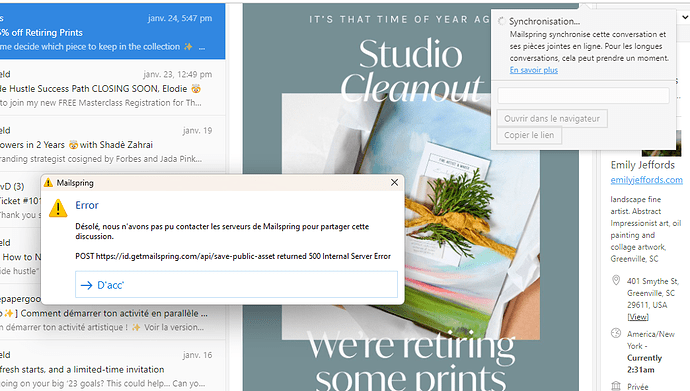I want to share an email message with other people, but I don’t want to forward it. Can Mailspring do this?
 Pro Feature
Pro Feature
Mailspring allows you to create and share links for individual email threads and conversations. Have an email conversation you want to share with your team, embed in a wiki or post on Slack? Follow these steps to create shareable link that can be shared everywhere.
When viewing a message in Mailspring, click the ![]() Share Icon to open the sharing panel and click the “Share this thread” checkbox. Copy the link that appears and share it!
Share Icon to open the sharing panel and click the “Share this thread” checkbox. Copy the link that appears and share it!
Anyone with the link can view the conversation and download attachments. If new emails arrive in the conversation and Mailspring is running, it will add them to the shared link automatically. You can stop sharing a conversation at any time by unchecking the “Share this thread” checkbox.
WARNING: Be considerate of the other people in your email thread, and the nature of the content, before you share! This is the internet: once you share something, it’s very hard to take it back!
Technical Details
When you click the “Share this Thread” button, Mailspring sends the headers, contents, and attachments of all the messages in the currently selected thread / conversation to Mailspring’s servers via a secure (SSL) connection. They are stored by our backend services on Amazon S3 and are publicly accessible to anyone with the shared link, which is partially based on your Mailspring ID and additionally randomly generated when you start sharing the thread.
When you uncheck the “Share this Thread” button, Mailspring overwrites the message headers and contents it previously published with an empty JSON block, ensuring that your conversation is no longer accessible.
If the email you’re sharing is sensitive, you should be careful not to share the Mailspring link via insecure means that might open it to a wide audience (like sending it via HTTP to a forum website). You should also consider that third parties operating other chat / messaging services might view the page and potentially cache its contents. (For example, Facebook Messenger frequently visits and indexes links that you paste into your chats.)


